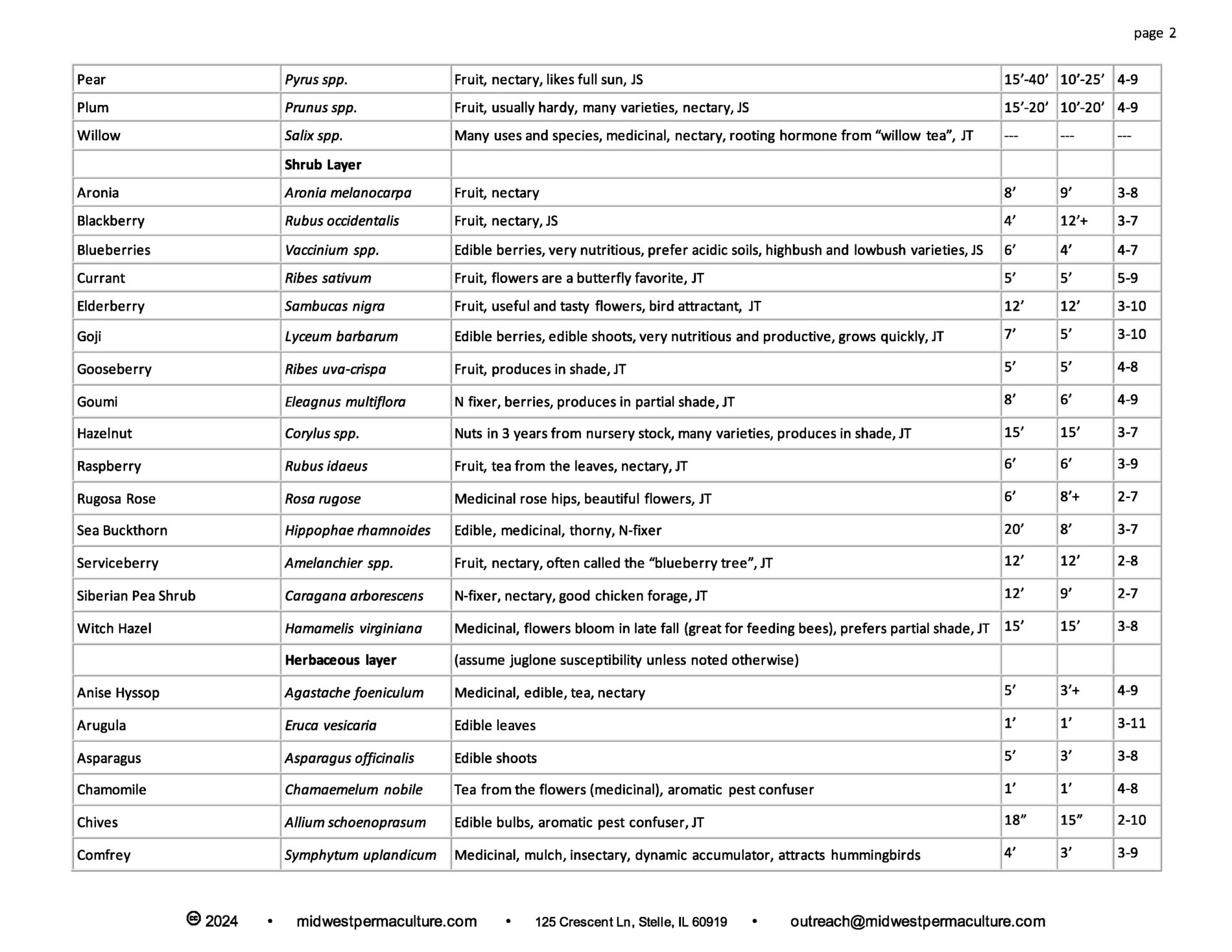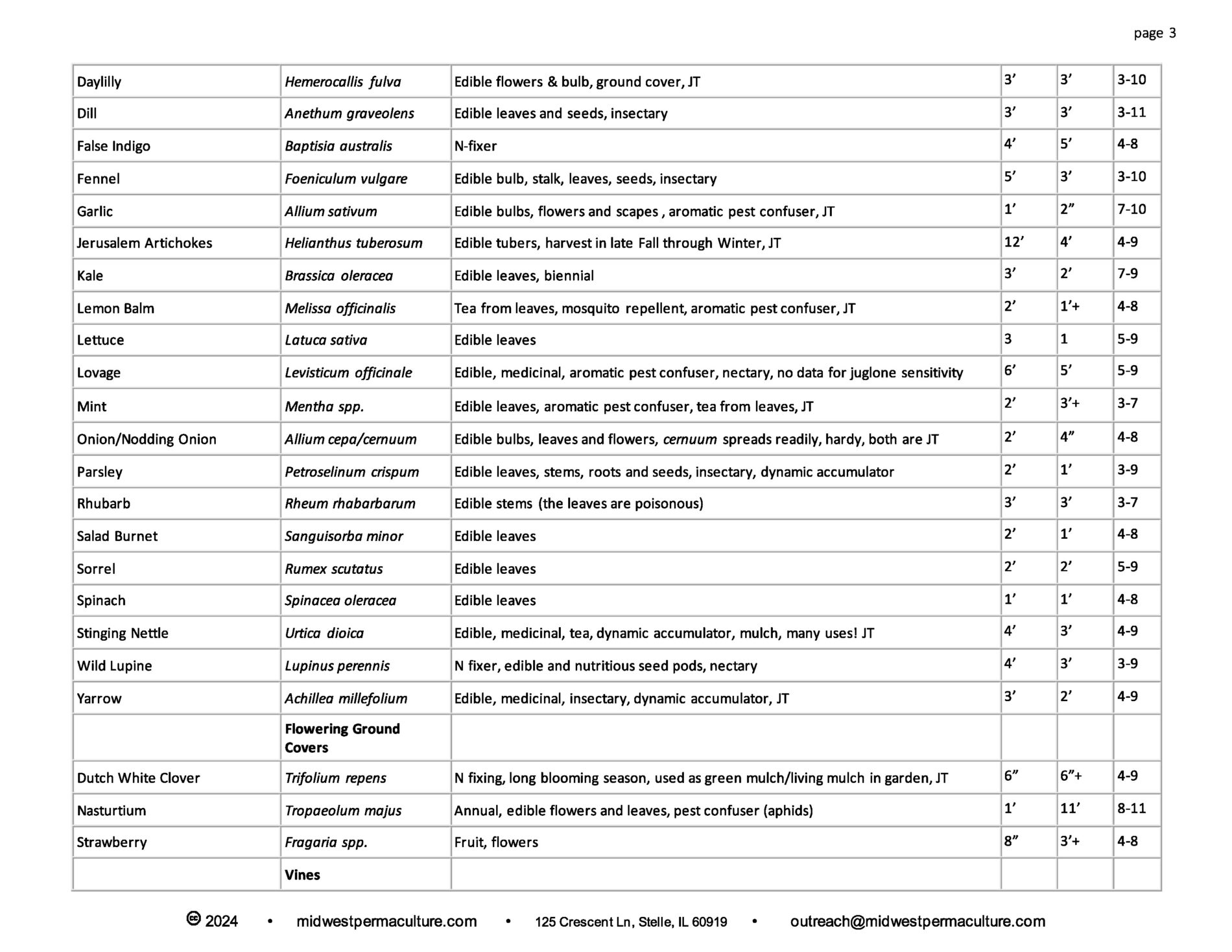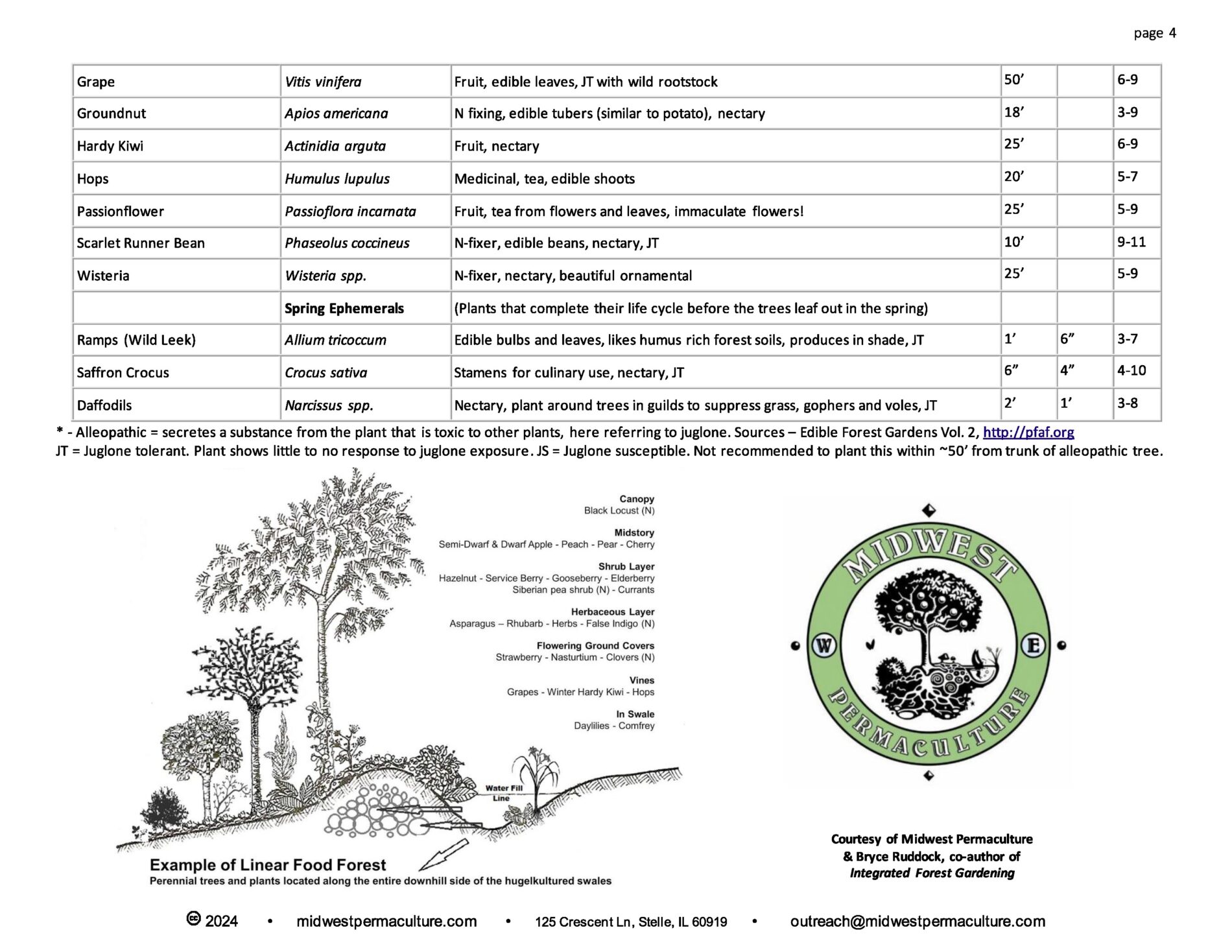From our design team to you
80 of our Favorite Plants
With thousands of plants to choose from in the Midwest, these are the ones we use over and over.
When designing different plant systems, we noticed how frequently we came up with many of the same plants species, project after project. This is of no surprise as there are so many familiar species that people want to have and enjoy. So, if one never left this list they could still create endless permaculture designs of orchard gardens, food forests or plant guilds that are comprehensive and highly functional.
To be clear, we all end up adding additional species to this list over time but when getting started, this list will take a new designer a long way. Enjoy!

By signing up, you'll receive occasional email newsletters with valuable permaculture insights and updates on our courses. We respect your privacy and won't send spam. You can unsubscribe at any time.






13 thoughts on “80 Favorite Plants for Permaculture Guilds in the Midwest”
What do ‘JT’ and ‘JS’ stand for?
Great list!
JT = Juglone tolerant. Plant shows little to no response to juglone exposure. JS = Juglone susceptible. Not recommended to plant this within ~50’ from trunk of alleopathic tree.
Love these ideas. We’re in Missouri, and we have 6 acres of invasive honeysuckle. We also have beautiful locusts, Osage oranges, redbuds and mulberries, with some pioneer plants, but the understory is completely overgrown with honeysuckle. Any advice to remove it that doesn’t involve heavy machinery?
Goats will eat honeysuckle, and with time and repeated browsing can control it. With invasions it’s important to not just beat back the invader, but reintroduce and/or favor other species. Goats prefer to browse (rather than graze) so consider seeding aggressive desirable herbaceous species that will enjoy the released sunlight, compete well with honeysuckle seedlings/resprouts and benefit from the goats’ preference for woody plants.
sell the honeysuckle plants! i love them 🙂
That is a solution, though I suppose it depends on exactly what kind of honeysuckle.
Hi Dana.
I like John’s reply. Mob grazing some goats will put a lot of pressure on the honeysuckle but I would also look for any damage to the bark of trees you wish to keep. If the goats take a liking to those you may have to protect them, but with ‘mob’ pressure they are not around any specific trees long enough (1-2 days) to do much damage.
Goats
Do you have any advice as to how to get rid of ferns? Most of our fields are plagued with them, underneath and in between trees.
From Ireland zone 8-9
Ferns like shade. They will tend to dominate in shady environments.
How can you turn the problem into a solution? Why do you have to get rid of them? What specific problem do they cause? Are there other ways to accomplish that goal? What kind of ferns are they?
I could suggest taking down some or all the trees to create a sunny environment. That would accomplish your goal but you might not like how you get there. Perhaps graze some goats through to help eat them down.
In permaculture we aim to work with nature, not against. If those ferns want to be there how do we work with that force to create natural abundance?
I don’t see Black Willow (salix negra) on the list. It is unfortunately dying off here in the Chgo. area. I have tried replanting cuttings from some of the old and dying trees. I feel it should be respected and saved. You can root most any plant with ‘willow water’. Cut off canes, chop up and soak in water. Use the water as a rooting agent for other plants. It’s a good water sucker for wet areas.
Hi, thanks for sharing these guild info.
I’d have a question regarding the drawing above. In the drawing the canopy tree seems to be Robinia Pseudoacacia. How do you deal with its suckering behaviour and how the fruit trees are affected by it.
Bets regards
Antonio
I’ve seen black locust (Robinia Pseudocacia) controlled with mowing, your plantings would have to be designed with that in mind. You could also prune back the suckers as you find them. Being the nitrogen fixer it is somewhat of a sacrificial tree. If it’s in a place where you want to do little or no maintenance you might be better off choosing a different canopy tree.